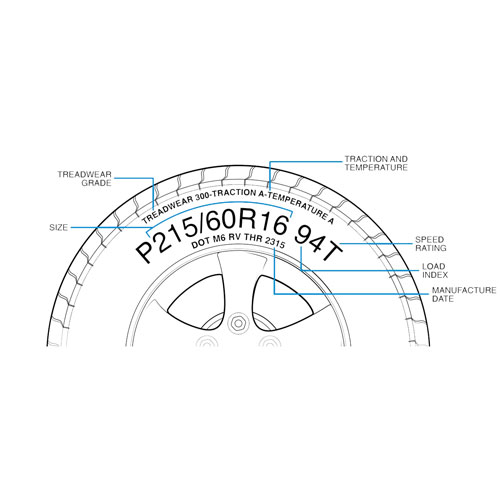Load Index markings – what the numbers mean
Similar to Speed Rating, every tyre on the market has a Load Index indicator. Expressed as a two or three digit number, the load index tells you what the maximum allowed weight your tyre can carry.
| Number | Load | Number | Load | Number | Load | Number | Load |
|---|---|---|---|---|---|---|---|
| 60 | 250kg | 61 | 265kg | 62 | 265kg | 63 | 272kg |
| 64 | 280kg | 65 | 290kg | 66 | 300kg | 67 | 307kg |
| 68 | 315kg | 69 | 325kg | 70 | 335kg | 71 | 345kg |
| 72 | 355kg | 73 | 365kg | 74 | 375kg | 75 | 387kg |
| 76 | 400kg | 77 | 412kg | 78 | 425kg | 79 | 437kg |
| 80 | 450kg | 81 | 462kg | 82 | 475kg | 83 | 478kg |
| 84 | 500kg | 85 | 515kg | 86 | 530kg | 87 | 545kg |
| 88 | 560kg | 89 | 580kg | 90 | 600kg | 91 | 615kg |
| 92 | 630kg | 93 | 650kg | 94 | 670kg | 95 | 690kg |
| 96 | 710kg | 97 | 730kg | 98 | 750kg | 99 | 775kg |
| 100 | 800kg | 101 | 825kg | 102 | 850kg | 103 | 875kg |
| 104 | 900kg | 105 | 925kg | 106 | 950kg | 107 | 975kg |
| 108 | 1000kg | 109 | 1030kg | 110 | 1060kg | 111 | 1090kg |
| 112 | 1120kg | 113 | 1150kg | 114 | 1180kg | 115 | 1215kg |
| 116 | 1250kg | 117 | 1285kg | 118 | 1320kg | 119 | 1360kg |
Some tyres have a dual rating, for example “96/94N”, where the 96/94 is the load index. Whenever there are two numbers shown like this, this is for multiple-axle applications. On a single axle trailer, the higher “96” rating applies, so each tyre is rated at 710kg. The tyre rating across the axle would therefore be 710 x 2 = 1420kg.
On multi-axle trailers, always use the second figure, in this instance “94”. The “94” denotes it has a load rating of 670kg per tyre, so on a twin axle trailer it would be 670 x 2 x 2 = 2680kg
Please Note: The figures above show the only load rating of the tyres – always consult your trailer chassis plate to see what your trailer is plated at. Your axles may not be rated as highly as the tyres.


